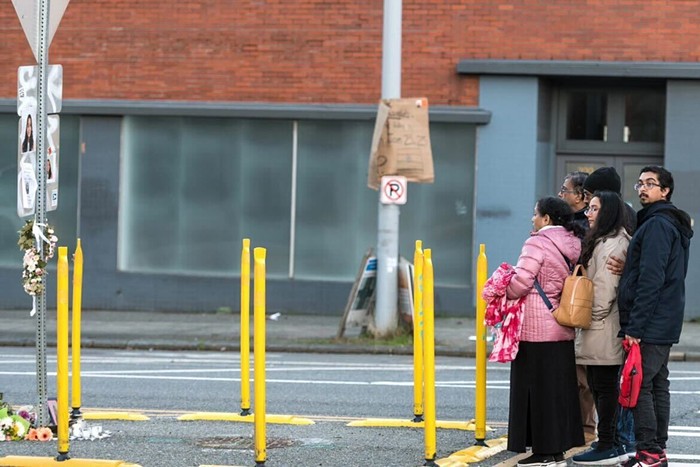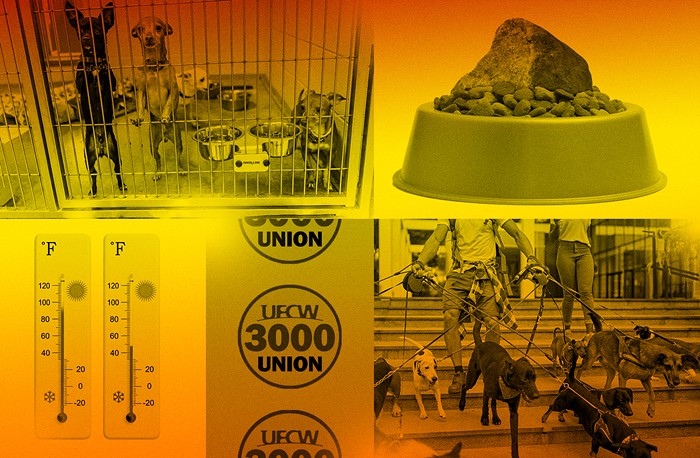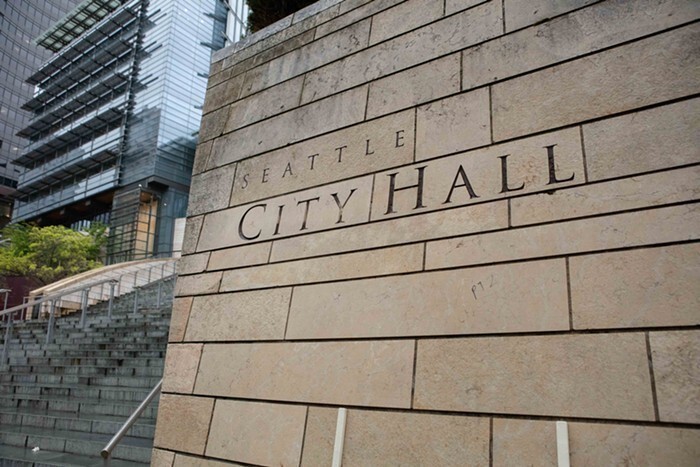The five-year process to fix Seattle's terrible town-house designs is already a parody of Seattle's protracted routine of getting everyone's opinion before changing city laws. But nowa group of 15 neighborhood activists from across the city have filed a legal challenge that will delay it further. Some people at City Hall have dubbed the group's members, who have opposed lots of city improvements lately, "the usual suspects." As for the current town-house fight, the group claims that the city hasn't studied the issue enough.
"The city has done zero outreach, zero analysis of potential effects of changing the zoning or reducing setbacks [between the buildings and the sidewalk]," says Fremont resident Toby Thaler, one of the people who filed the challenge on May 13 with the city hearing examiner to stop the city council from voting on new rules for town houses.
But city council member Sally Clark, chair of the council's Committee on the Built Environment, rejects those claims. "There's been wide community involvement—we've been shaping and reshaping this proposal, with the help of some of the appellants. To say that we've rushed this process or not had input is disingenuous."
Existing town-house rules create eyesores: clusters of shared-wall homes built around cavernous concrete driveways and surrounded by towering walls of fencing. The gabled-roof clones end up alienating the neighborhood around them.
Brad Khouri, an architect who has been advising the city council, says existing rules are "producing terrible results. We need more flexibility... not these kind of rubber-stamp designs."
The reason these town houses proliferate across Seattle is because building rules adopted by the city in 1989 actually encourage them. Town houses are allowed in so-called low-rise zones, which make up about 9 percent of the city. In boom years, hundreds have been built annually (many exhibiting the bad designs), and Seattle can reasonably expect scores of town houses with bad designs to continue popping up until the city overhauls its regulations.
So five years ago, the city's Department of Planning and Development (DPD) set out to change those rules by taking public input and drafting new regulations. Two years ago, the city council, led by Clark, began an exhaustive process of taking still more input from neighborhoods and developers.
The crux of what seems to annoy neighborhood leaders: The new rules would increase density—in town houses and some slightly larger buildings—by 10 percent (or 39,000 units citywide). They would marginally raise building heights by less than five feet in most cases and get rid of parking requirements for any building under four stories near light-rail stations, transit hubs, and neighborhood commercial areas.
If the appeal by neighborhood activists hadn't been filed, the city council could vote now. If new town-house guidelines pass, Khouri says, "we'll see unique designs that engage with the street instead of these monotonous boxes that are stamped all over Seattle."
But opponents argue that the city hasn't consulted with neighborhoods or considered the environmental impacts of these rule changes—specifically, that the revised code will eradicate affordable housing, shrink lawns, and hurt the character of their neighborhoods. The city studied the proposed town-house plans and determined that no further research was necessary; however, neighbors want the city to return to conduct a more thorough environmental impact study—an onerous process that can take up to a year—to further ponder the proposed zoning changes.
But many of the group's claims don't add up.
For example, the group claims there has been "zero outreach." Mike Podowski, a DPD land-use planner who has been working on town-house designs for years, counters that he's "personally attended 40 or so community meetings on this issue."
Thaler says changing the town-house rules would "make it impossible for trees to survive. Our tree people are very concerned." That's ridiculous. Podowski points out that the new rules would likely "result in more landscaping and more tree planting than the current code—up to 20 percent more."
And while some neighborhood groups have smartly fought projects that could have bad effects—like a 520 bridge design that lacked accommodations for light rail—this fight seems more of a don't-do-anything approach to dealing with the 1.7 million people expected to move to the region in the next 30 years.
While Thaler claims the group isn't antidensity—even though it's appealing a process that would only increase density slightly—others in the group have opposed numerous construction projects. Within the last year, neighborhood activists from Rainier Valley to Laurelhurst have fought a Seattle Children's Hospital expansion, delayed building around new light-rail stations, and jammed up other projects. One of the people fighting town houses, Laurelhurst Community Club president Jeannie Hale, also fought a Children's Hospital expansion and opposed taller buildings in the Roosevelt neighborhood. Hale even protested certain medevac helicopters arriving at Children's Hospital because, she said in 2009, the helipad near an elementary school "causes big gusts of wind and endangers the kids on the playfield."
A city hearing examiner will hear the challenge on July 23. If upheld, town-house changes could face another year's delay; if dismissed, the city council could vote on them in early fall. ![]()



















